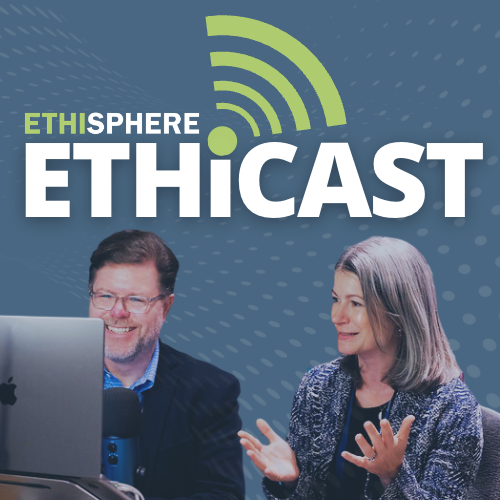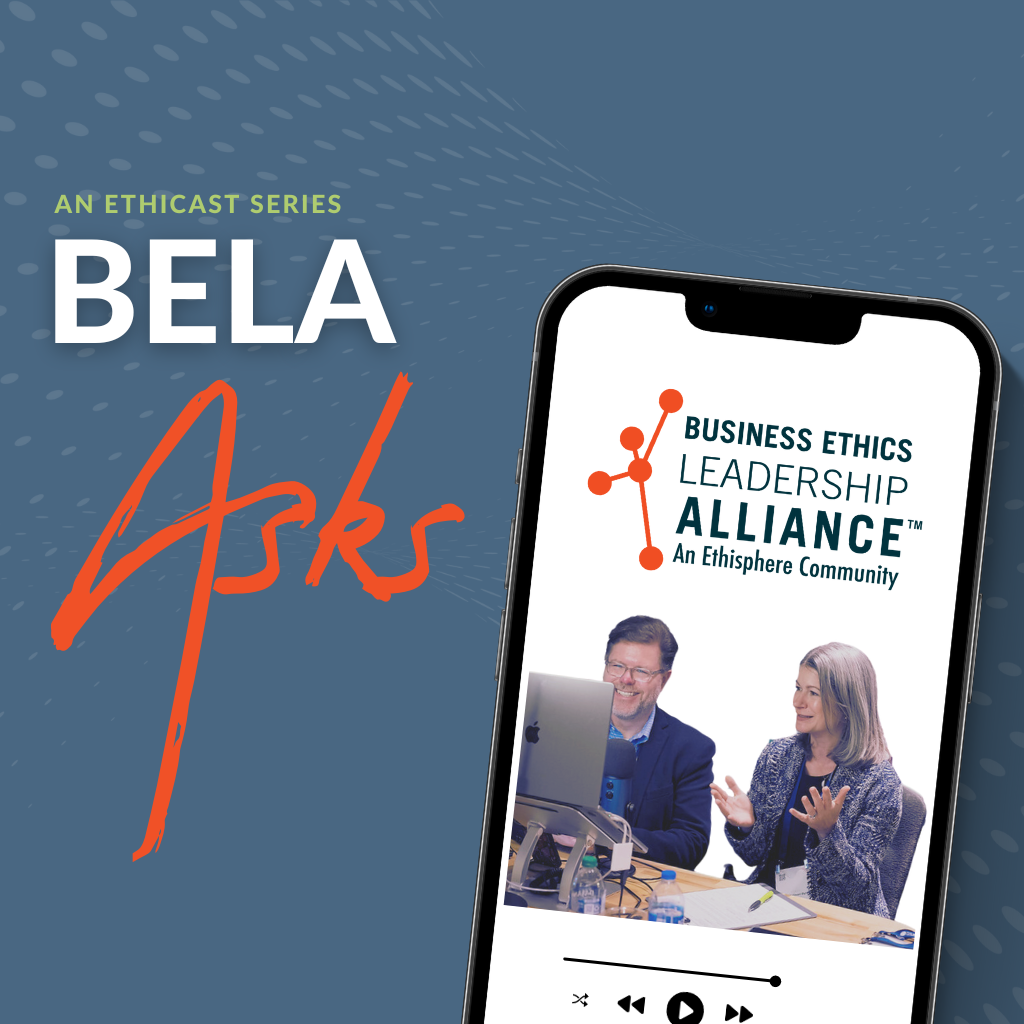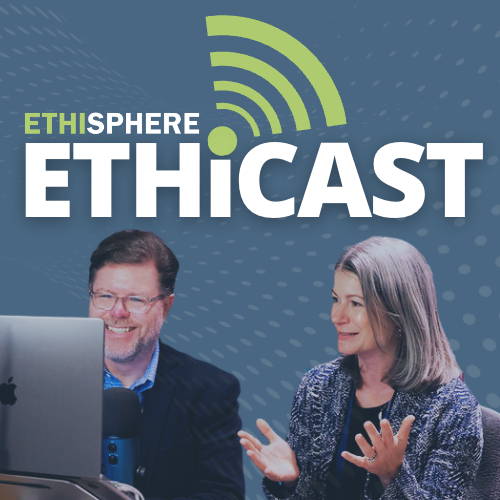Episode Transcript
[00:00:00] Speaker A: Hi, everyone. You've got questions and we've got answers. Welcome to another Bella Asks episode of the Ethicast.
The Business Ethics Leadership alliance, or bela, is a global ethics and compliance community that provides exclusive access to helpful data, benchmarking events and other resources to advance your ethics and compliance program.
One of those resources is Bella's concierge service in which members can submit any question regarding ethics and compliance and our internal experts will provide an answer, plus helpful resources with more information.
Now, while we invite everyone watching and listening to join BELLA and you really should. We know that there's no competition in compliance, so we're using this program to thematically respond to high level questions from the BELA community for the benefit of ENC teams everywhere. Joining us once again to answer those questions is Bella chair Erica Salmon Byrne. Erica, welcome back to the show. It's great to see you as always.
[00:01:02] Speaker B: Yeah, Bill, it is great to see you. And I'm particularly excited about today's question.
[00:01:07] Speaker A: It's a good one. It is a communications question and it reads, how do I reach non wired employees?
[00:01:15] Speaker B: It is hard to believe, Bill, in today's day and age that there are non wired employees. But the fact of the matter is there are. And they might be non wired from a company perspective in the sense that they are in a jurisdiction where they are not allowed to use personal devices in the workplace, maybe on a factory floor or you know, they're on a secure inside of a secure location, like on a military base or defense contractor or something like that. It could be they're working out in the fields and they don't have devices. It could be they're working in, you know, some sort of a warehouse. They don't have devices.
So there's lots and lots of ways in which we can think about this, in this, this audience that we as ethics and compliance professionals have, that is not someone to whom we can just send an email.
And so longtime listeners of Bella asks will know that I'm very fond of my triangles. And one of my triangles is the communications triangle, which is messenger message modality. And so if you think about, I mean, we should be thinking about messenger message modality for every employee, whether we can reach them by email or not. But that communications triangle becomes particularly important when we are talking about an employee base that doesn't sit at computers all day. They're not going to come across an article on the intranet, they're not going to get an email from us and click on a video link. They're not going to be Somebody we can get in slacker teams, right? This is a, this is someone who is not stable stationary in a place where I can find them during the workday. So we have to get creative. We have to think about the, the three legs of that triangle very, very strategically. And I want to start with message because it is often tempting when we are thinking about our broad employee base to assume that everybody's. The message to everyone should be basically the same. Conflicts of interest is conflicts of interest whether you're sitting at a desk or not. Gifts and entertainment is gifts and entertainment whether you're sitting at a desk or not. And in fact that's not true.
So the first thing to think about is what is the message that this non desk sitting employee needs to get?
Are they working on an oil rig?
Different message, right? Are they a pharma sales rep driving from doctor's office to doctor's office? Different message. Are they working in a slaughterhouse? Different message. Are they, you know, picking lettuce in the field? Different message, right? They're different messages depending upon what, which particular audience that is non stationary that I'm looking to, that I'm looking to reach.
Second thing is, okay, once I've thought about what is that message that I'm trying to get out to this audience. Second thing is, how's everybody else in my organization doing it? Because I'm definitely not the only person that has to reach these employees. How's safety doing it? If you have a safety culture, how's quality doing it? If you have a strong quality culture, how's HR getting in touch with these people? Um, and then use those same channels, right? Piggyback on your sister control functions and the ways in which they are reaching these, those particular audiences. So that's the modality piece of it. So think about your message. What is, what are these, what is this particular group of people actually need to know? What is the modality that other people are using that I might potentially be able to, to think about using as well?
And then the third piece is the messenger.
And that is going to be a place where you're going to think about, think strategically about how am I using managers, how am I using ship leaders? How am I using for people?
Am I going out in person myself to do some, to do some of this key messaging? So all of those things need to come into play when you're thinking about these non stationary audiences. QR codes are great except that apparently now they're all phishing attempts or possibly will be seen as phishing attempts. According to our own security training.
But, you know, we see a lot of QR codes, we see a lot of quick talk tracks to. At shift change meetings is one option. You can think about appending things into a payroll portal. If HR has a way that they're getting messages to employees when they log in to see if they've gotten paid, maybe that's a functionality that you can use as well. So really, you know, go talk to your sister control functions and say, how are you guys doing it? Because chances are good there's, there's content getting to those people in some way, shape or form from one of your control function partners, and you can utilize.
[00:05:33] Speaker A: That same functionality as a communicator professionally. Culture is something you cannot overlook. Culture is the currency with which you buy your audience's attention. And you can have a fantastic message, you can have a fantastic mode, but if the culture is such that people don't want to hear what you have to say for whatever reason. Right.
You need to also make sure that that's. That's in mind. Because a great message in the wrong culture will absolutely fail, like 100 out of 100 times. So you got to make sure you align that with what the culture, with the cultural reality, with the zeitgeist of your workplace.
[00:06:03] Speaker B: And that zeitgeist is going to be different depending on what part of the workplace you're talking about too, is the other thing to remember. So just because you think you understand the zeitgeist where you're sitting doesn't mean that you understand it where people aren't sitting at all.
[00:06:15] Speaker A: Well, Erica, we've never used the word zeitgeist in this podcast before, but we did three times this one episode. So I think it's time to sign off. How about you?
[00:06:21] Speaker B: I think that sounds about right, Bill. And to all those Bella members out there that are listening to Bill and I, your questions matter. So please keep them coming. Okay?
[00:06:29] Speaker A: To learn more about Bella, Visit@the sphere.com Bella to request guest access to the member resource hub and to speak with the Bella Engagement Director. If you have a question that you would like answered on this program, contact the Bella Concierge Service and we'll get to work on it for you. This has been another Bella Asks episode of the Epicast. Thanks for joining us. We hope you've enjoyed the show. If you haven't already, please like and subscribe on YouTube, Apple Podcasts, and Spotify. And please be sure to tell a colleague about us as well. It really helps the program that's all for now. But until next time, remember, strong ethics is good business.


